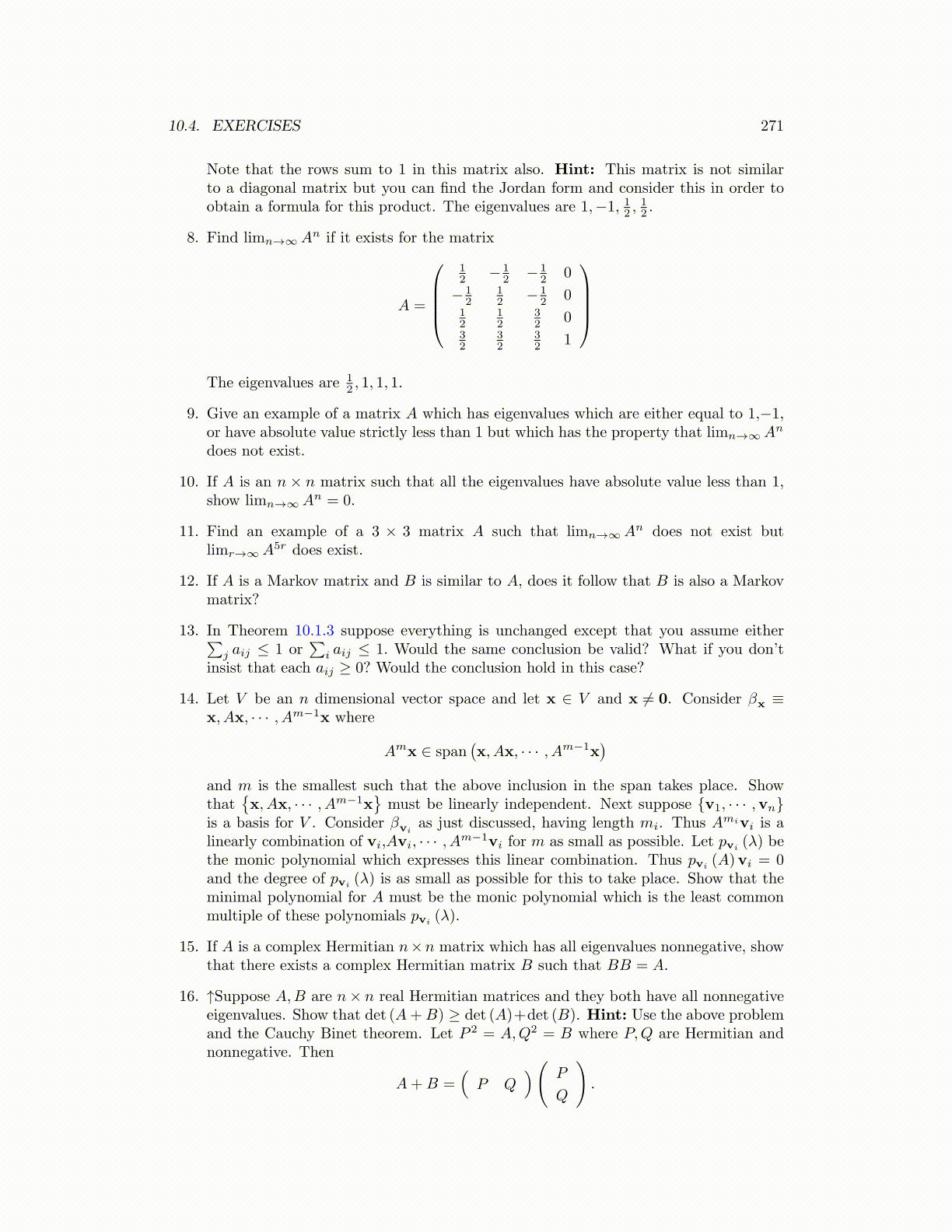
10.4. EXERCISES 271
Note that the rows sum to 1 in this matrix also. Hint: This matrix is not similarto a diagonal matrix but you can find the Jordan form and consider this in order toobtain a formula for this product. The eigenvalues are 1,−1, 12 ,
12 .
8. Find limn→∞An if it exists for the matrix
A =
12 − 1
2 − 12 0
− 12
12 − 1
2 012
12
32 0
32
32
32 1
The eigenvalues are 1
2 , 1, 1, 1.
9. Give an example of a matrix A which has eigenvalues which are either equal to 1,−1,or have absolute value strictly less than 1 but which has the property that limn→∞An
does not exist.
10. If A is an n× n matrix such that all the eigenvalues have absolute value less than 1,show limn→∞An = 0.
11. Find an example of a 3 × 3 matrix A such that limn→∞An does not exist butlimr→∞A5r does exist.
12. If A is a Markov matrix and B is similar to A, does it follow that B is also a Markovmatrix?
13. In Theorem 10.1.3 suppose everything is unchanged except that you assume either∑j aij ≤ 1 or
∑i aij ≤ 1. Would the same conclusion be valid? What if you don’t
insist that each aij ≥ 0? Would the conclusion hold in this case?
14. Let V be an n dimensional vector space and let x ∈ V and x ̸= 0. Consider βx ≡x, Ax, · · · , Am−1x where
Amx ∈ span(x, Ax, · · · , Am−1x
)and m is the smallest such that the above inclusion in the span takes place. Showthat
{x, Ax, · · · , Am−1x
}must be linearly independent. Next suppose {v1, · · · ,vn}
is a basis for V . Consider βvias just discussed, having length mi. Thus Amivi is a
linearly combination of vi,Avi, · · · , Am−1vi for m as small as possible. Let pvi(λ) be
the monic polynomial which expresses this linear combination. Thus pvi (A)vi = 0and the degree of pvi (λ) is as small as possible for this to take place. Show that theminimal polynomial for A must be the monic polynomial which is the least commonmultiple of these polynomials pvi
(λ).
15. If A is a complex Hermitian n×n matrix which has all eigenvalues nonnegative, showthat there exists a complex Hermitian matrix B such that BB = A.
16. ↑Suppose A,B are n× n real Hermitian matrices and they both have all nonnegativeeigenvalues. Show that det (A+B) ≥ det (A)+det (B). Hint: Use the above problemand the Cauchy Binet theorem. Let P 2 = A,Q2 = B where P,Q are Hermitian andnonnegative. Then
A+B =(P Q
)( P
Q
).